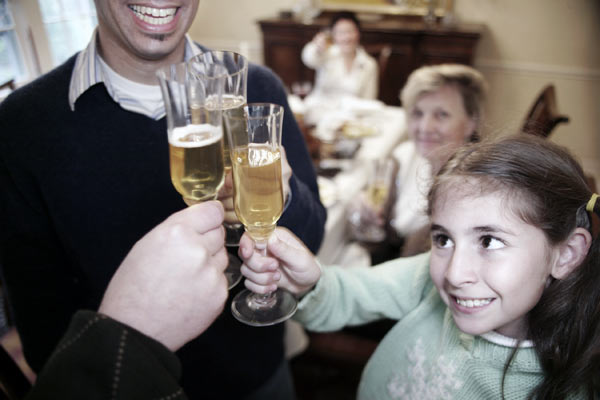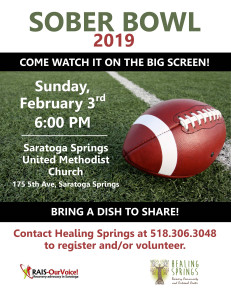

One of my favorite teachers in 7th grade used to jokingly gauge the difficulty of our tests by the number of Martinis we would need to drink after taking the test to recover from the mental effort required. He would refer to the hardest challenges as “3 Martini Tests” and most of the students would chuckle along with him as we reviewed material in preparation for these assessments.
But I could not wait to find out what a Martini was and to try one after hearing him say this over and over again when I was 13 years old and in the 7th grade.
There is a tendency to normalize and minimize the use and abuse of certain addictive substances and behaviors in America, and I have recently decided to talk and write more about why that is not just a slight issue, but actually one of the primary reasons that our problems with addiction rage on from generation to generation in many parts of our country. At the risk of being a “buzz kill” for some people, I have resigned myself to doing my best at expressing the impact that adults, and parents, and all people in charge of our kids have when it comes to influencing early decisions that can either promote or prevent addictive behaviors.
Here are my main reasons for taking this issue on:
1. I don’t see many other people talking about it.
2. It’s really, really important.
3. We could change our country for the better and finally win the “War on Drugs” if we start learning more and making some relatively small changes.
Those three reasons seemed good enough to me, and I hope you will at least begin considering some of the truths I am setting about to share on this topic. So let’s start by discussing alcohol as an example. Pretend for a moment that you are talking to a foreign traveler who asks you how Americans view the use of alcohol. How would you answer that question? Would you say that we condone it? Prohibit it? Is drunken behavior a taboo in our society, or is it socially acceptable? What about the drinking age? How do you feel about that? Why do we have it, and how strongly is it enforced? What are the social problems in America associated with alcohol use? How about the social benefits?
When people across America have been asked to consider these questions, it might surprise you to learn that their responses were vastly different, but that they usually based their answers on similar things. Our individual opinions and outlook on drinking in this country often comes from the cultural norms that our families and caretakers have instilled in us. Part of our opinion on these things is also based on the geographical region in which we are raised. The highest percentage of problems associated with alcohol abuse happen in the Northwest of America and right here in the Northeast of our country. The lowest percentage of problems is in the south – across what is often termed the “Bible Belt”. The big question is coming next, but I have just given you a hint to answer it correctly.
Here is the question: Why do people who live in the “Bible Belt” have fewer problems with alcohol abuse? If you answered “Because it is warmer down there,” think again. If you answered “Because God does not let drunk people into Heaven,” you are actually getting closer to the reason, but it’s a bit more complex. The real reason is because of the overall belief systems and the modeling of behaviors that influence children’s decisions and behaviors in these areas from a very young age. Many studies have been done, and millions of dollars have been spent on proving what my own father told me with his simple country wisdom years ago: “the apple usually doesn’t fall too far from the tree”.
In case you are not convinced, do the research yourselves. Look at any study done on children growing up in a culture where abstinence from alcohol is the norm. You can do this for Muslims, Mormons, or Amish people, and you will find the same results. There are far fewer problems related to alcohol abuse within these cultures. In the “Bible Belt,” where the messages about alcohol consumption vary from complete abstinence to temperance “using in small quantities and only on special occasions,” we find similar results. And we don’t have to use religious organizations or beliefs associated with religion to see this concept proven. Kids who grow up with parents that smoke cigarettes are more likely to smoke, and to develop problems related to nicotine. The same with kids who grow up in a house where marijuana is used. Or cocaine. Or heroin. So why should we think that kids growing up around alcohol use are not going to drink more and to develop one of the many problems associated with alcohol?
Well, I honestly think that alcohol has gotten a “free pass” for so long, that many people do not even consider it a drug. In fact, I often hear many people within the Addiction Treatment Field say “Let’s talk about drugs and alcohol.” A better way to say this is “Let’s talk about drugs, including alcohol.” It is interesting that cigarettes are often criticized and viewed as “worse” than alcohol by many people. Our culture continues to minimize alcohol as a dangerous drug, and our kids know this. How did you feel when you saw the young children in the pictures above? Did you have a stronger reaction to the alcohol photo or the cigarette photo? Alcohol is one of our oldest and most influential drugs, and we need to acknowledge it this way. What we say, and do, and how we feel about addictive substances really does matter – especially when it comes to educating our children about alcohol.
A second tendency I often see with alcohol use is that many people associate it with fun – with having a good time. This may be true in some instances “remember the idea of temperance – a small amount and only on special occasions,” but we also need to talk more about the problems that alcohol use creates. Take a minute and think of a social problem in our society. Now ask yourself if alcohol use or abuse might contribute to that problem, or make it worse. Are you getting the picture yet? Is drinking alcohol always the good time we seem to make it out to be? Now take a minute and think of a social problem in America that could be made better or solved if only we could get people to drink more. I have asked this question to thousands of people in my career, and no one has found a single societal problem that would be improved by adding some more alcohol.
The third problem that I have witnessed is parents and caretakers simply not wanting to stop their own drinking, or even to take an honest look at how it might be impacting their kids. I will often hear parents take on a “do as I say, not as I do” policy about drinking. They minimize the impact that their personal actions and attitudes about alcohol have on their kids. I will not go into the many reasons that parents may do this, but I will say that this is a type of dangerous denial that only serves to feed the cycle of alcohol abuse and addiction within families.
So there it is. The big picture I am trying to paint here is to encourage everyone to educate yourselves about drug use, abuse, and dependence. And that alcohol is a drug. And that the words, and actions, and your attitudes about drugs “including alcohol,” have a very strong and lasting impact on the young people in your life. If you would like to email me with any specific questions or for more information, please do. Any discussions I have with people are kept confidential and I truly do like to talk about these things!
Here is an invitation to our fourth annual Sober Bowl Part this weekend and a link for more information that was put out by Hazelden, one of the leaders in Addiction Treatment today: http://www.hazelden.org/web/public/prev081027.page




Leave a Reply